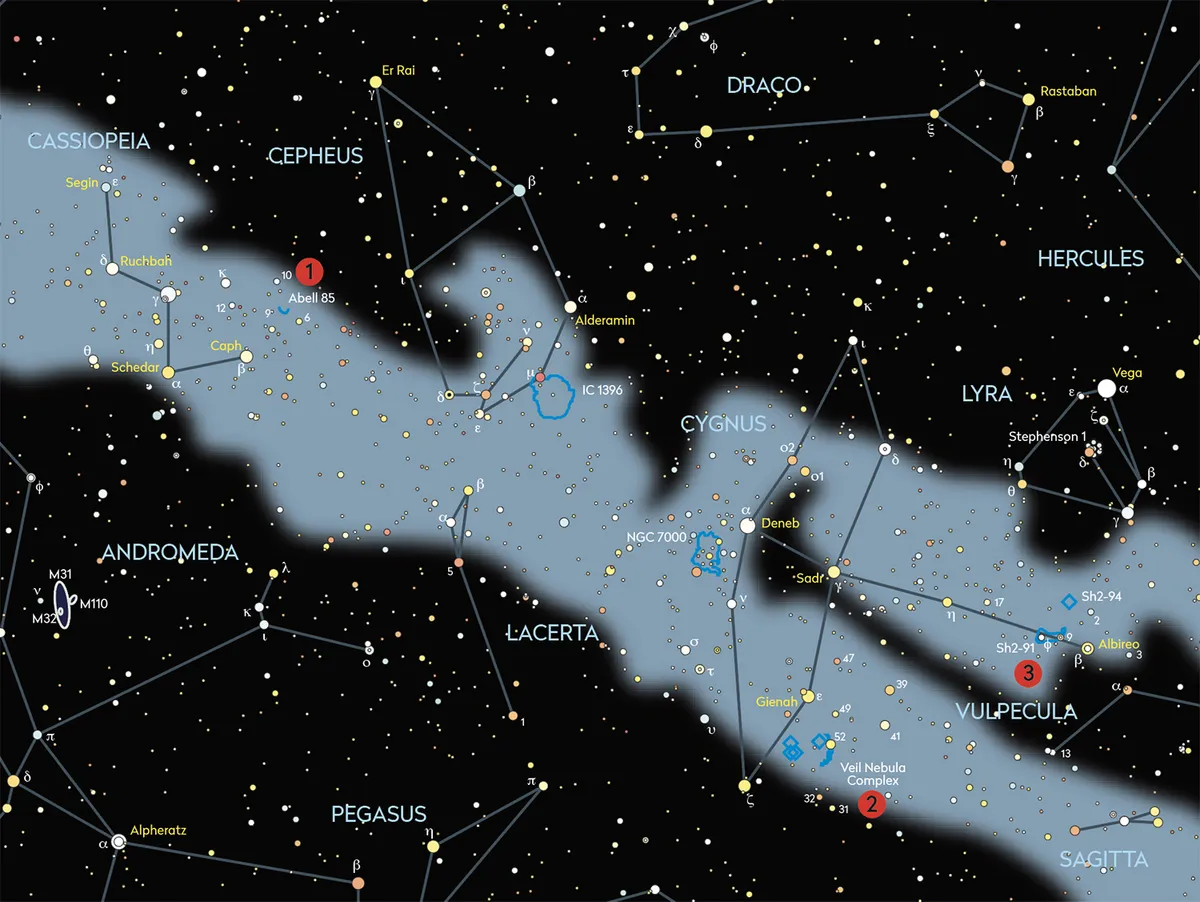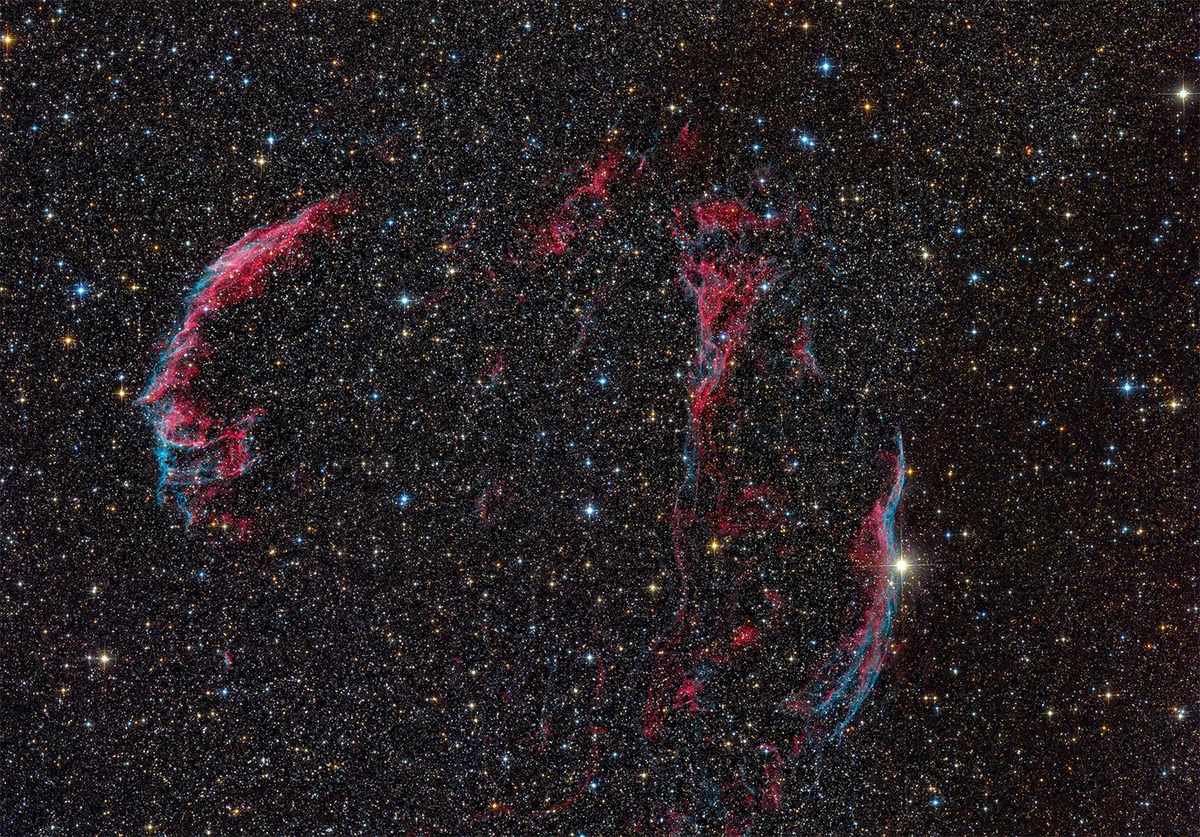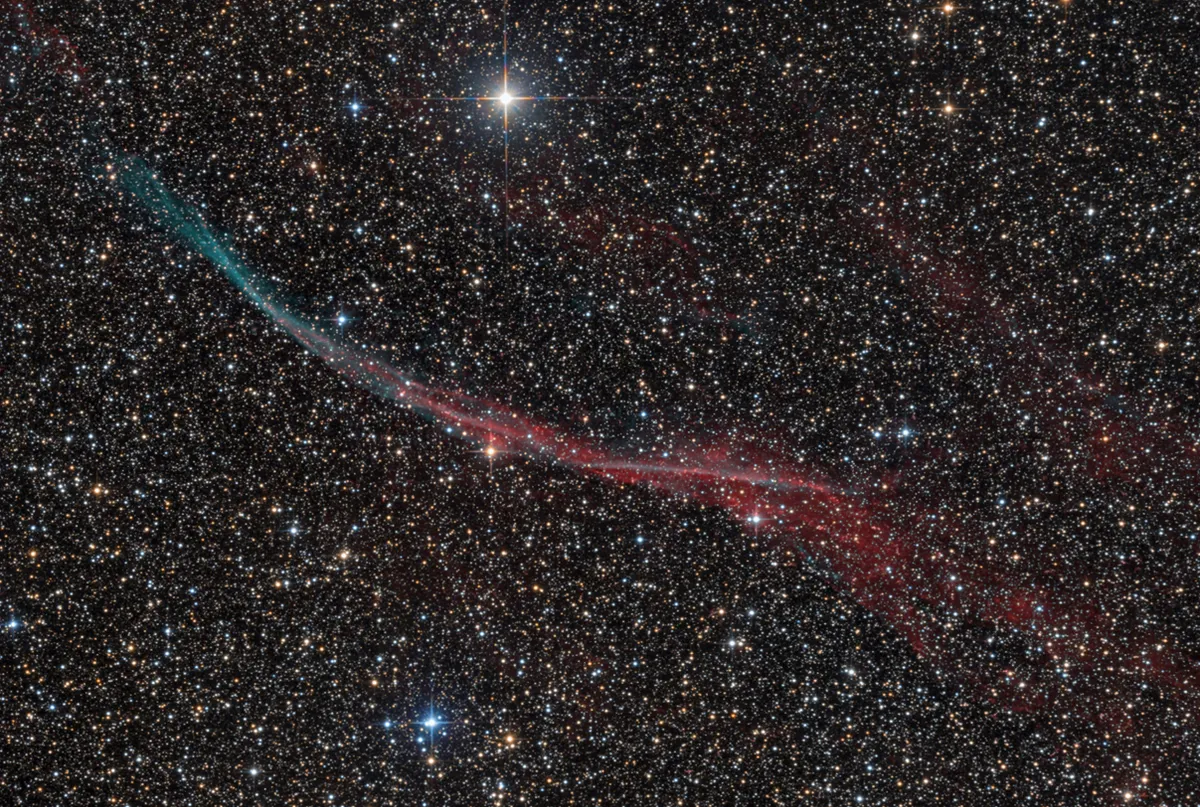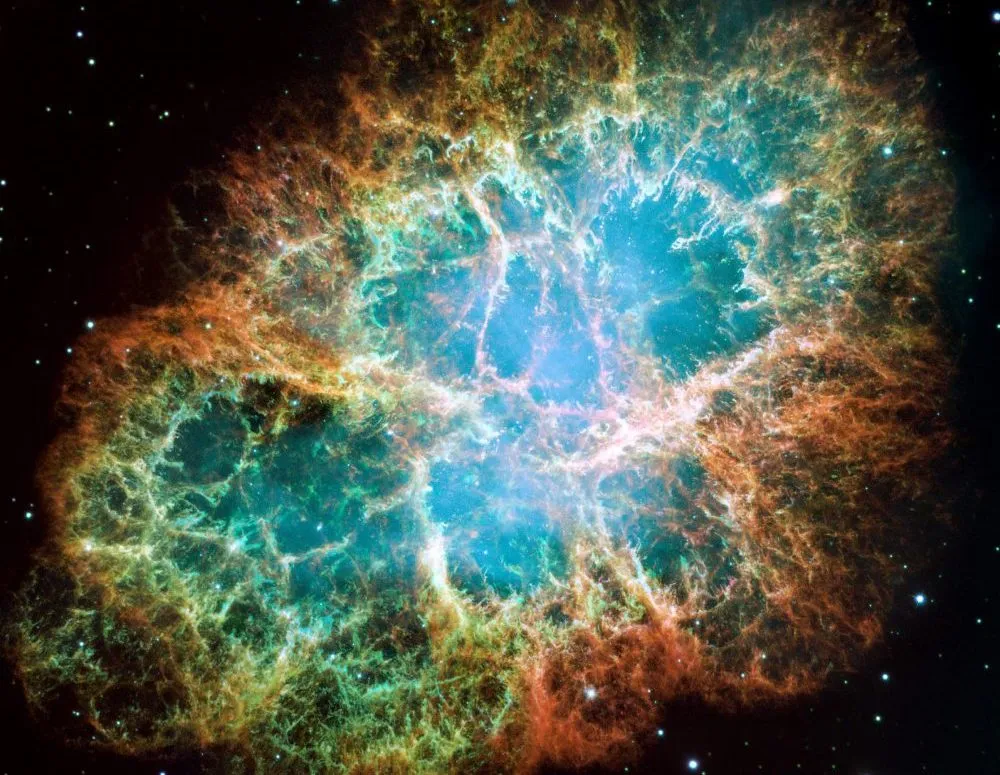As Bonfire Night approaches it’s a great time to take a look at some of the biggest bangs in the Universe: supernovae. Although 5 November is probably not the best time to chase after these targets, as the smoke from bonfires and firework displays will fill the sky with haze.
There hasn’t been a visible supernova in our Galaxy since 1680, but we can see their remnants – the gas and dust left behind in their wake. Often diffuse, with wispy strands of nebulosity, supernovae remnants can be among the most challenging targets for the visual observer.
A supernova remnant is the material of a star that’s ejected into space when it explodes. There are two main ways in which a star can become a supernova.
Read more observing guides:
- A guide to Halloween astronomy
- How far can you see into space?
- Deep-sky astronomy: a beginner's guide
One is when a big star nearing the end of its life, having burned all its fuel, collapses in on itself, with the inrush of material rebounding off the star causing it to explode.
The same process can happen in a binary star system when a high-mass, white dwarf star collects material from a companion red giant star.
Once a critical mass is attained, the white dwarf becomes a supernova.When the star explodes all the material that made it up is expelled into interstellar space at high speed.
It heats up and the shockwaves end up creating the structures we can see through our scopes.Most of the heavy elements in the Universe are created during these explosions.
Over time the nebulae will dissipate, so all the supernovae remnants we can see are comparatively young.This material eventually re-cycles into new stars and the cycle continues.
Seeing all our remnants in one night is a tall order, so it may be worth trying to observe them through the month – from 1 November when the Moon sets earlier in the evening.
To improve your views make sure you choose a site away from direct light sources, though there are a few objects that should be visible from suburban skies.
Where to see our supernova remnants in the night sky
Use the chart to help you locate numbers 1-3 in our supernova remnant guide

And now on with the tour...
1
Abell 85

Abell 85, also known as CTB1, is an exceedingly difficult object for visual observers.
Originally it was thought to be a planetary nebula (a roughly spherical cloud of gas around a dying star), which George Abell listed in his catalogue. But further research showed this object to be a genuine supernova remnant.
Abell 85 is located in Cassiopeia, a short hop 3.5˚ north of Caph (Beta (β) Cassiopeiae). It’s about 0.5˚ in diameter – the size of the full Moon.
It predominantly emits in red hydrogen-alpha light, at the red end of the spectrum, and is quite weak in bluer OIII and hydrogen-beta emissions.
This makes it difficult for visual observers as our dark-adapted eyes are not very sensitive to the deep red.
If you have a very large telescope (16-inch aperture or more) and favourable sky conditions, give it a try. Abell 85 is a good target for CCD imaging, however.
2
The Veil Nebula

One of the most beautiful nebulae, the Veil, used to be considered a really challenging object, but these days it is routinely observed with small telescopes such as 3-inch (76mm)refractors.
The game changer for viewing the Veil has been the nebula filter, and the OIII is particularly useful in this case.
There are two brighter sections of the Veil Nebula, the eastern side, NGC 6992, and the western side, NGC 6990, which is also known as the Witch’s Broom.
To find the western Veil it’s easiest to locate the star 52 Cygnii, which is embedded in the Broom.
From here you can track around the nebulosity to the north and east to find the eastern section.
The Veil is really big on the sky – with a diameter that measures about 3˚, equivalent to six full Moon widths.
The nebula lies about 2,100 lightyears away and has a real diameter of about 110 lightyears.
The supernova that spawned this remnant exploded about 8,000 years ago.
3
Sharpless SH2-91

Sharpless SH2-91 is the brightest of a number of filaments that make up the ‘other’ Cygnus supernova remnant. It’s quite a lot fainter than the Veil and will be a big challenge for most observers.
A large telescope with a 12-inch (304mm) aperture or more and nebula filters will help to see it.
The supernova that created this remnant exploded about 30,000 years ago and lies about 2,500 lightyears away from us.
To find SH2-91, start out at the beautiful double star Albireo and travel up the neck of the swan to Phi (φ) Cygnii – then move 12 arcminutes to the south to find an 8th magnitude star; the brightest part of the filament is centred around this star.This filament extends about 20 arcminutes.
SH2-91 is an under-observed object, both visually and by imagers; if you’re up for a challenge, give it a go.
Where to see our supernova remnants in the night sky
Use the below to help you locate numbers 4-8 in our supernova remnant guide

And now on with the tour...
4
The Crab Nebula

The Crab Nebula, also known as M1, is the first object in the Messier Catalogue of comet-like objects that aren’t actually comets.
Although Charles Messier found it in 1758, M1 had previously been noted by John Bevis in 1731, and the supernova which created the remnant was observed by Chinese astronomers in AD 1054.
It came to be known as the Crab Nebula following sketches made by Lord Rosse at Birr Castle.
M1 is the brightest of our targets at mag. 8.4, but is also quite small with a diameter of around 6x4 arcminutes.
Located in Taurus it’s quite easy to find in a small telescope or binoculars.
If star-hopping, start at Zeta (ζ)Taurii and nudge just a degree or so northwest, and you should alight nicely.
Being compact it stands out quite well, and it’s easy to see why it might be confused with a comet.
An interesting experiment is to compare old astrophotos of the Crab with recent images – when these are aligned you can see the nebula’s expansion.
5
The Jellyfish Nebula

Popular with imagers, the Jellyfish Nebula is also a good target for visual observers.
The reason for its ‘jellyfish’ moniker is more obvious in pictures than during visual observing.
It lies in the constellation of Gemini so you can find it by first locating the star Eta (η) Geminorum, which marks the foot of Castor.
Then it’s just three quarters of a degree or so east to land on the nebula. You will need a scope with an 8-inch (203mm) aperture and a nebula filter; an OIII is usually a good one for this.
The Jellyfish is nearly a degree in diameter. Visually the curve of the nebula which makes up the body of the ‘jellyfish’ is the most prominent feature.
Take time to observe, though, and some of its tendrils may come into view.
It lies about 5,000 lightyears away and estimates of its age range from 3,000 to 30,000 years.
6
The Witch Head

The Witch Head looks like a reflection nebula so it might come as a surprise to realise it is actually a supernova remnant lying about 900 lightyears away.
The remnant is very old and rather than being illuminated as a result of the supernova explosion, it is shining by the light of the bright blue giant star Rigel.
It lies in the constellation of Eridanus close to Orion. Rigel is the best starting point if you
are trying to seek out the nebula; just hop 2.5° north-east and you should be there.
It is large and diffuse which makes it difficult to pick out, but small telescopes such as a 3-inch (76mm) refractor with low power wide-field eyepieces can reveal it.
However, our trusty narrow-band filters will be of no use – reflection nebulae are principally blue with no peaks in the OIII or hydrogen-beta regions.
7
Barnard's Loop

Barnard’s Loop, which circles Orion, is a straightforward target for astrophotographers, but a challenge for visual observers.
Probably one of the largest structures on the sky, its huge arc covers about 10˚ and it might come as a surprise to realise this object is a supernova remnant.
Its distance is rather uncertain, but it’s nearby, in the region of 500 to 1,400 lightyears away, making it something like 100 to 300 lightyears in diameter.
Good deep-sky observing conditions will be essential for any naked eye view, and only the brightest portion to the south of the star 56 Orionis will be visible.
Zero power, or low power (x2), binoculars can help to keep your attention focused on one area and can be equipped with nebula filters (UHC) to assist further.
With Orion prominent in the sky all winter there will be plenty more observing opportunities as the season progresses.
8
Simeis 147

Simeis 147 was discovered at the Simeis Observatory, an outpost of the Crimean Astrophysical Observatory, in the 1950s.
They were photographing the night sky looking for HII regions (a volume of space where the hydrogen is in an ionised rather than neutral state) and catalogued these in their Bulletin.
Most of the objects were already known with NGC numbers or other designations, so not many are known by their Simeis number.
Simeis 147 is one of the most interesting supernova remnants; its loops of nebulosity lead to its common name of Spaghetti Nebula.
Simeis 147 lies in Taurus near to the Auriga border, and is about the same size as the Veil Nebula, 3˚ in diameter.
However, it is much fainter and a much bigger challenge for the visual observer.
A scope of 16-inch (406mm) aperture or more may be needed, but it’s not so hard to image and shows up well in hydrogen-alpha.
This article originally appeared in the November 2019 issue of BBC Sky at Night Magazine. Callum Potter is the current president of the British Astronomical Association, and director of the deep-sky section.